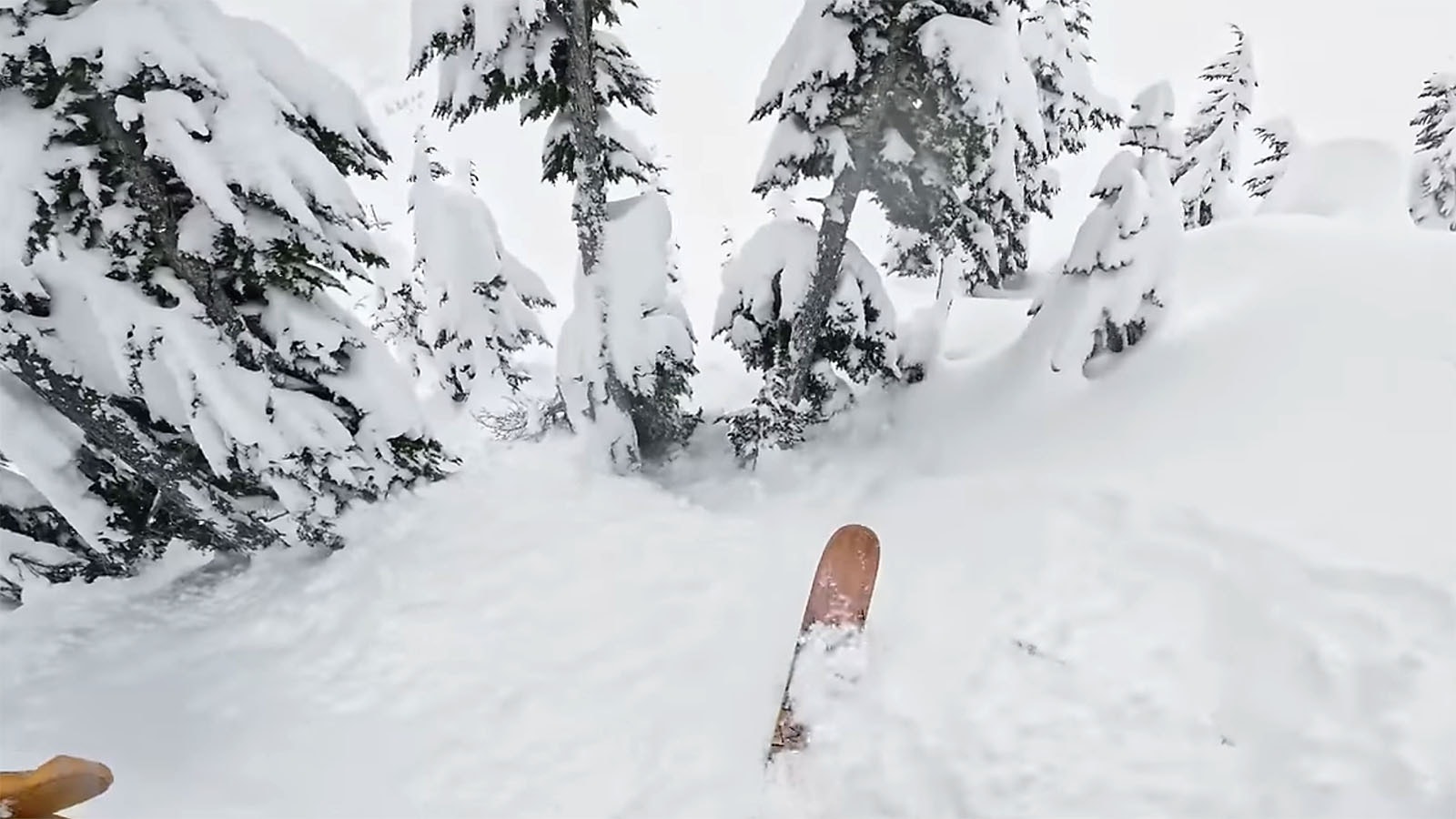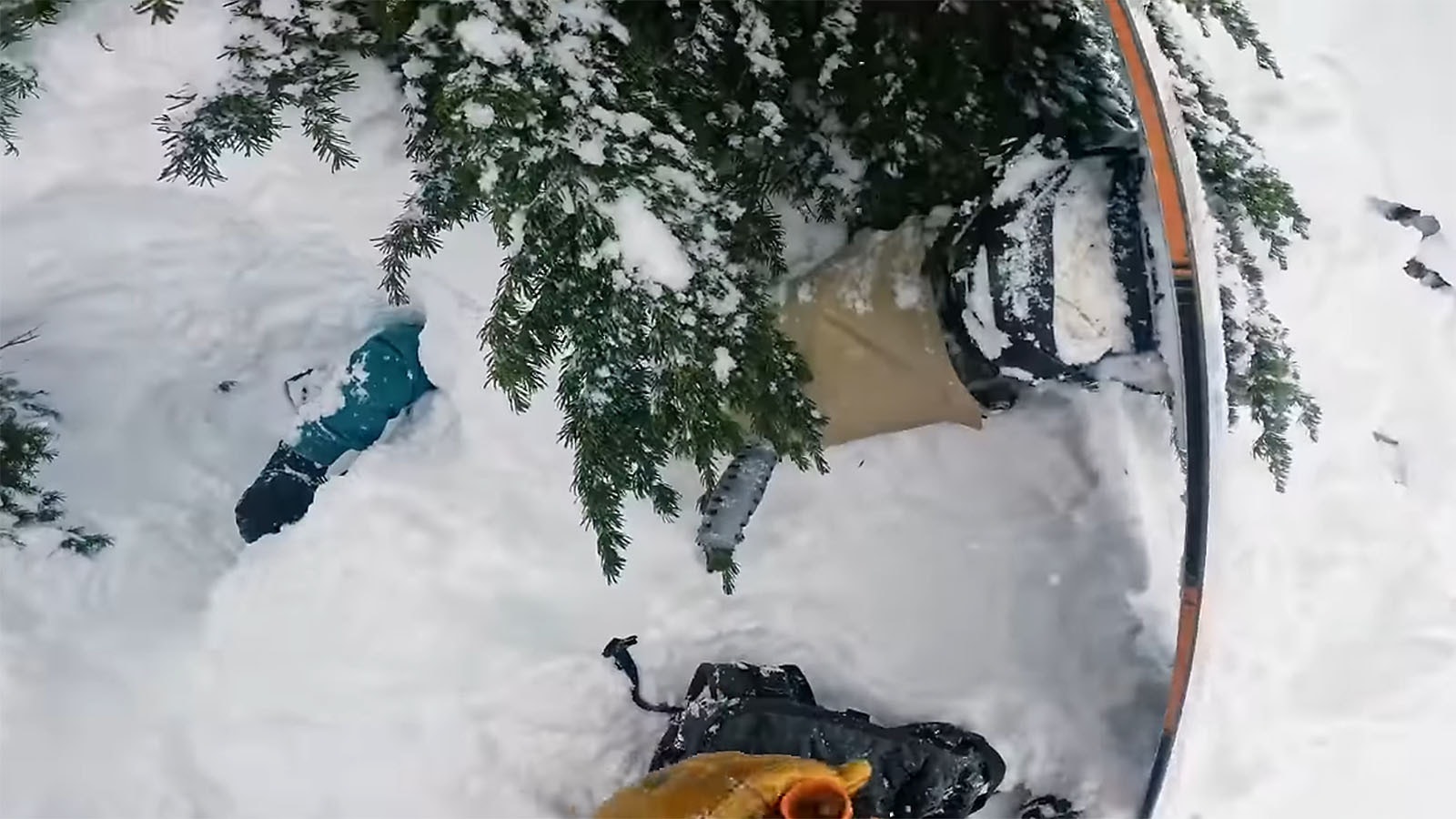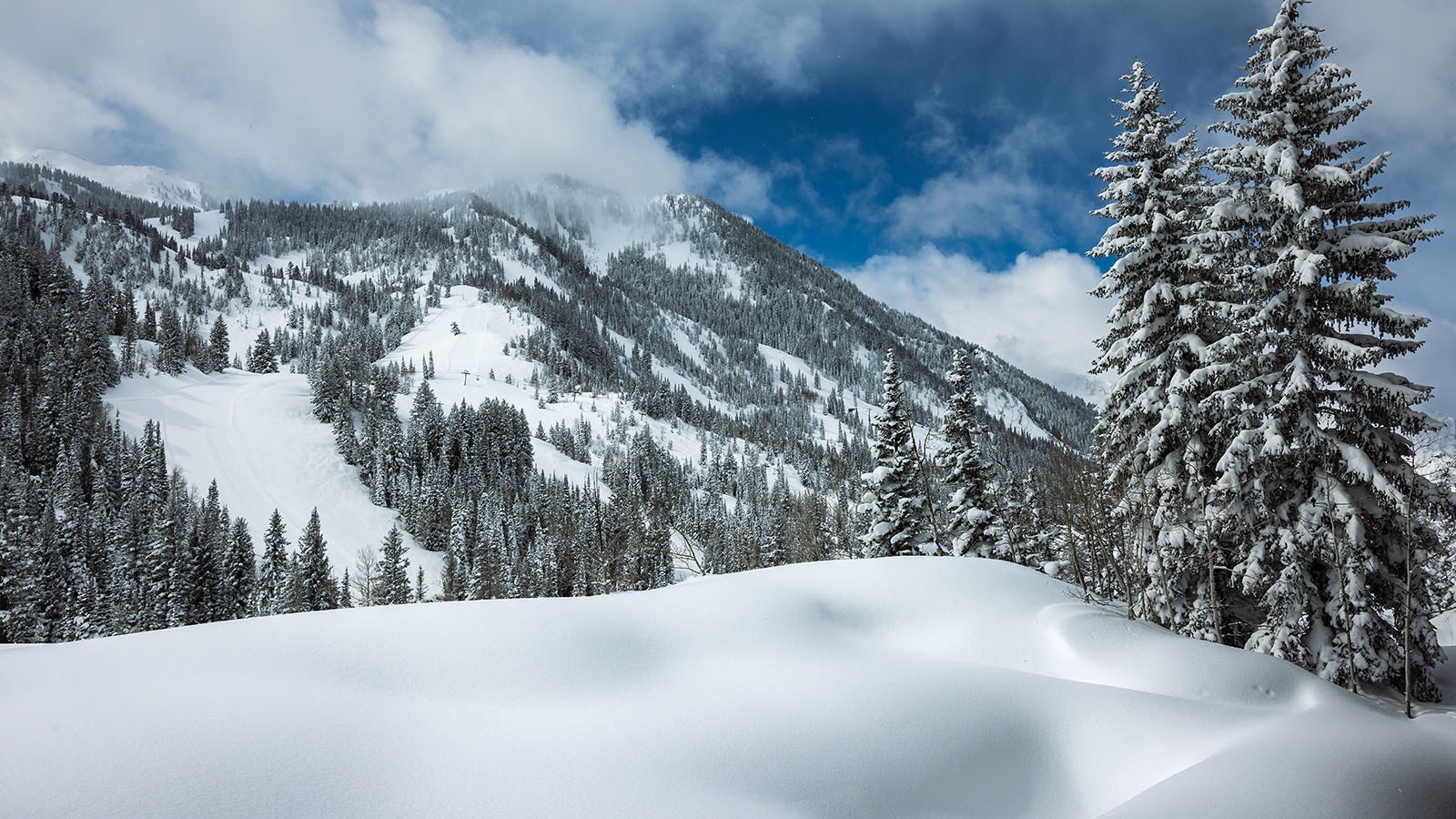Although avalanches present an obvious, well-publicized risk in winter snow sports situations, tree wells are a more rarely discussed and less known danger at Wyoming ski areas and backcountry.
Two people have died after falling into tree wells while skiing in Wyoming this season alone.
What’s A Tree Well?
Tree wells are holes created after a large amount of snow builds up around an evergreen tree trunk, creating a deep, unconsolidated snow pocket. The well often cannot support the body weight of a skier or rider who may come too close to it and fall in, and like quicksand, traps its victim.
Skiers can plunge deep into these wells if they fall in the wrong place, becoming buried, immobilized and in some cases succumb to a condition known as snow immersion suffocation (SIS) as the loose snowpacks in around them. The danger of suffocation is much higher during headfirst falls, according to ski website Powder.com.
According to deepsnowsafety.org, the odds of surviving a deep snow immersion are low, and that 90% of people involved in tree well/SIS research experiments could not rescue themselves. There were 50 tree-well deaths reported in the United States from 2000-2015.
Just how dangerous tree wells can be is illustrated in a dramatic backcountry rescue caught on the GoPro camera a backcountry skier was wearing last spring in Washington state.
In the video, Francis Zuber was skiing in deep, champaign powder when a snowboarder passes him as they approached a stand of pines.
The snowboarder, later identified as Ian Steger, quickly disappeared from view and Zuber continued navigating between the trees.
As he passes one particularly deep well of snow, he noticed Steger’s snowboard on top of the snow, bottom side up. He immediately knew Steger had fallen head-first into a tree well and was buried to his board.
What unfolded next was captured by Zuber’s GoPro. In the video uploaded on GoPro’s YouTube channel, Zuber quickly, but calmly, makes his way to the buried snowboarder, digs several feet down before finally uncovering Steger’s face, alive and breathing.
Had Zuber not come across him and acted quickly, it’s likely Steger wouldn’t have been able to extricate himself before suffocating.
What Happens?
Jon Bishop, director of base area operations risk and safety for Jackson Hole Mountain Resort, said there are many factors that can lead to a tree well incident, including snow conditions and how the snow has built up around a tree, slope angle, the size and shape of the tree, and the size of the person who falls into a well.
That makes predicting where and when a tree well incident will happen on the mountain ahead of time impossible.
“There’s so many facets to it,” Bishop said. “It’s not one or two different things.”
Bishop said he’s seen a couple tree well deaths at Jackson Hole since joining the mountain staff in 1997. One was this year when a Jackson man died after falling into a well while skiing on the mountain March 1.
“When an individual loses control and falls head-first into an unconsolidated patch of snow quite deeply, they may be unable to extricate by themselves,” Bishop said.
The rate of tree well incidents can also be difficult to gauge, Bishop said. That’s because people aren’t likely to report these incidents if a ski partner helps them get out safely.
Jackson Hole alerts its visitors to the risks of tree wells on its website and signs placed around the mountain, particularly in gladed tree skiing areas.
It also mentions the tree well risk in its mountain updates when there has been new snow, but Bishop said new snow alone doesn’t guarantee that conditions are any more dangerous for falling into a tree well because of the many variables involved.
“It’s very unfortunate, that’s the reality,” Bishop said. “Is it a concern? Yes. Is it a tragedy? Yes. Is it preventable? No, it’s a risk intrinsic to the experience of skiing.”
The Rocky Mountain region typically has drier snow than in the Pacific Northwest and West Coast, creating a higher risk for tree wells here, Bishop said.
Risky Situation
Self-extrication from a tree well, especially with skis on, can be almost impossible in certain situations.
Red Lodge, Montana, resident Nick Gaddy, who ski guides in Montana and Wyoming, rescued himself from that situation.
Gaddy was skiing in Utah with a friend when he unexpectedly caught his ski edge and tumbled upside down into the well of a tree, ending up with his skis and feet propped up into the air.
“I thought to myself, ‘Oh my god, I’m upside down in a tree well,’” Gaddy said. “It was kind of that panic response — I can’t move.”
Gaddy said he felt paralyzed and had to consciously calm himself down before trying to make his next move.
Luckily for him, it wasn’t a deep tree well and he was able to eventually shimmy his way out to safety.
How To Prevent?
Although Gaddy had been riding with a friend that day, the two had become separated by the time of the incident as his friend had skied on ahead of him.
The best way to prevent death or injury from falling into a tree well is to always go out with a partner, and make sure you and that partner always stay within eyesight of each other. As long as someone sees another person fall into a tree well, the inherent risks are significantly reduced as it’s usually relatively easy to pull another person out.
As a guide, Gaddy said he always tries to keep an eye on his clients at all times.
In February, a Colorado man died while skiing at Grand Targhee Resort in Alta after falling into a tree well. Although this man had a partner with him, they became separated, and the other person did not know what happened to him.
Bishop said skiers and snowboarders face the biggest risk of falling into a tree well, but it could also happen to snowmobilers, snowshoers and cross-country skiers.
“Generally, it’s a component of loss of speed and control into a tree,” he said.
And not everyone who finds themselves in a tree well are as lucky as Gaddy or Steger, who once his face was uncovered could only utter a breathless “thank you” to Zuber.
Leo Wolfson can be reached at leo@cowboystatedaily.com.








